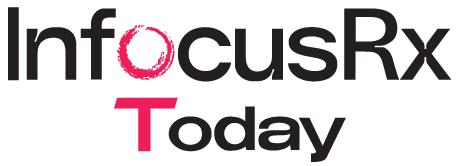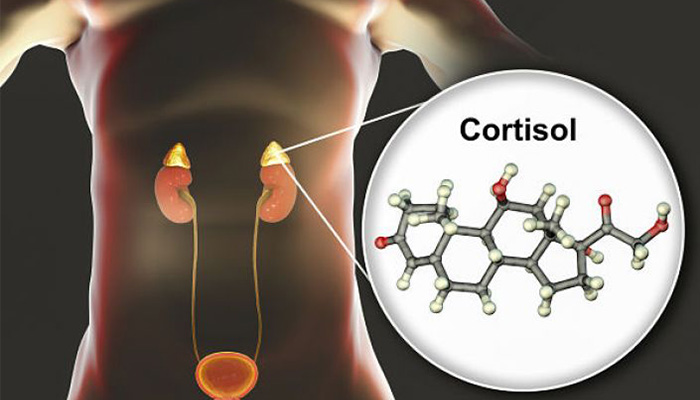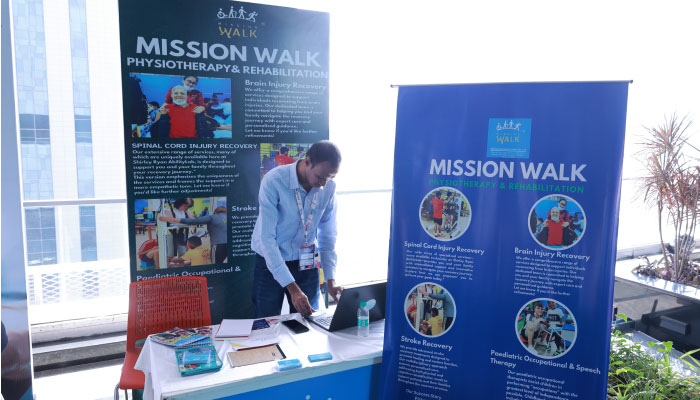Everybody would have heard the term hormones, but many still are not clear that what exactly are hormones and what is their function in our body. In simple terms, hormones are chemical messengers that travel through the blood stream to different organs and elicit different functions. Hormones are produced by a special type of cells called as the endocrine cell or glands, which include – the pituitary, pineal, thymus, thyroid, pancreas, adrenal, testes (in men), and ovaries (in women). Hormones are responsible for different functions like growth, metabolism, reproduction, mood, sexual function and many. This piece of write up deals with one of the endocrine gland – the adrenal gland. Adrenal gland occupies the top of both the kidneys. They are responsible for producing 3 different types of hormones such as – corticosteroids (cortisol & corticosterone), Aldosterone, and androgens. The basic functions of these hormones are
- Cortisol: Controls the body’s use of fat, protein, and carbohydrate
- Corticosterone: This together with cortisol controls inflammatory reactions and immune system
- Aldosterone: maintains blood volume and blood pressure, it also limits the excretion of sodium into the urine
- Androgen: Development of male characteristic
These hormones are very important for normal life; we can actually say that we cannot survive without these hormones. For proper body function it is essential that hormones are produced in the required quantity, neither less nor more. One of the diseases that results due to imbalance production of adrenal hormone is congenital adrenal hyperplasia (CAH).
About Congenital Adrenal hyperplasia
CAH is a genetic disorder, where the defective gene is passed from parents to their children. It is actually the result of an error in single gene, it is an autosomal recessive disorder, which means that for a child to get CAH both the parents must be affected or atleast both should carry a defective gene for CAH. CAH is also called as 21-hydroxylase deficiency because the defective gene results in deficiency of the enzyme 21-hydroxylase, which is required for the production of adrenal hormones. The adrenal gland in people with CAH does not produce enough cortisol and Aldosterone, but instead make too much of androgen. CAH can be either mild or severe, the severe form of CAH is called as the classical CAH and the milder form is called the non classical CAH. CAH affects both boys and girls and can be detected at birth or in early childhood. The prevalence of CAH is 1 in 10,000 to 18,000 children.
If parents are diagnosed with CAH, then it’s sure that the child will also get CAH. But the condition for inheriting the defective CAH gene is that either both parents should have the disease or both should be carriers (has the defective gene but not the disease) of the defective gene. If parents are expecting their child and there is a history of CAH in their family, then it is better to consult a doctor and go for prenatal screening tests (screening before the child is born). Prenatal screening procedures include chorionic villus sampling and amniocentesis. If CAH is detected in the unborn infant then doctor can prescribe few medicines to cure CAH even before the baby is born.
Symptoms
CAH is a disorder where adrenal hormone, androgen, responsible for male characteristic, is produced in excess resulting in dominant male characters both in male and female.
Females with CAH may have deeper voice, early appearance of pubic and armpit hair, and excess growth of facial and body hair appears too early. They may have no menstruation; females with mild CAH may have irregular menstruation. They may have trouble getting pregnant and may have ambiguous genitals, which looks more like male than female. Females with CAH may have normal height as children, but shorter as adults.
Boys do not show any obvious symptoms at birth, however, may have early puberty as early as 2 to 3 years of age. They may have deep voice and very early appearance of armpit and pubic hair. They have small testes and enlarged penis. They are tall as children but shorter as adults.
Classical CAH results in following complications in infants due to excess loss of salt:
- Dehydration
- Vomiting
- Cardiac arrhythmias (irregular heart beat)
- Change in electrolyte
- Low blood pressure
- Low sugar levels
- Acne
Adrenal crisis
Adrenal crisis is a condition that occurs when there is no sufficient cortisol hormone. When there is lack of cortisol, the circulatory system that pumps blood throughout the body stops working anymore during times of physical stress like illness or injury. It may also result in low level of sodium in blood, dehydration, vomiting, diarrhea, low blood sugar, and shock. Therefore, people with very less cortisol should never fail to take cortisol replacement, especially during illness and injury to avoid adrenal crisis. Less amount of cortisol is a life-threatening condition resulting in sudden rapid death.
Diagnosis
Diagnosis of CAH starts with examining the physical features of the infant, and if the doctor suspects that the child may have CAH he may proceed with other confirmatory tests like urine and blood tests, which shows the amount of all adrenal hormones. Any abnormality in the adrenal hormone level helps in diagnosing CAH. In pregnant females, who have a family history of CAH, doctors may recommend for prenatal tests such as
- Amniocentesis: A needle is inserted into the womb to withdraw a small amount of amniotic fluid (fluid in which the fetus floats in womb), which has the fetal cells. This is later tested in laboratory for detecting CAH
- Chorionic villus sampling: Cells from the placental is taken and checked in lab
Children born with CAH are ambiguous in their sex as their external genitals do not give a conclusive result, in such case, doctor may perform a genetic test called karyotyping, which will help determine the sex of the baby. An ultrasound scanning of the pelvic region can show the presence of ovaries, uterus, and fallopian tube in case of female baby. Testing for CAH is usually done as a routine part of new-born screening.
Treatment
Treating CAH is possible, but curing is not. Children diagnosed with CAH should take medicines to replace the hormones that their body is not able to produce. In case of mild CAH, they can take medicine whenever they are sick or injured but in case of severe CAH, hormone replacement should be taken every day to avoid adrenal crisis and death. In case of adrenal crisis, doctor may give an intravenous or intramuscular shot of hydrocortisone hormone. In case of low blood pressure, intravenous fluids may be given to bring the pressure close to normal.
Surgery may be required in case of girl infants, who have an ambiguous genital. This surgery involves reduction of clitoris size and reconstructing the vaginal opening. This surgery is performed when the baby is 2 to 6 months old.
When CAH is diagnosed in unborn fetus doctor may recommend the pregnant mother to take corticosteroid drug – dexamethasone. This medicine crosses the placental barrier and reaches the fetus and suppresses the activity of fetus adrenal gland. In case of female infant, dexamethasone may reduce the production of androgen and helps in normal formation of female genitals and reduce the masculine features. In case of male fetus, a short course of dexamethasone is recommended to allow normal functioning of the adrenal.
Outlook
Children with CAH usually have a good healthy life after treatment, except that they will remain little shorter than normal even after treatment. Males with CAH have normal fertility but females have low fertility and a smaller vaginal opening. Females with CAH are more likely to engage in boys activities but this doesn’t mean that they are ambiguous about their sex nor does it mean that they are mentally disturbed. With full support and encouragement from parents and doctor they can have a normal self esteem and satisfying social life.



